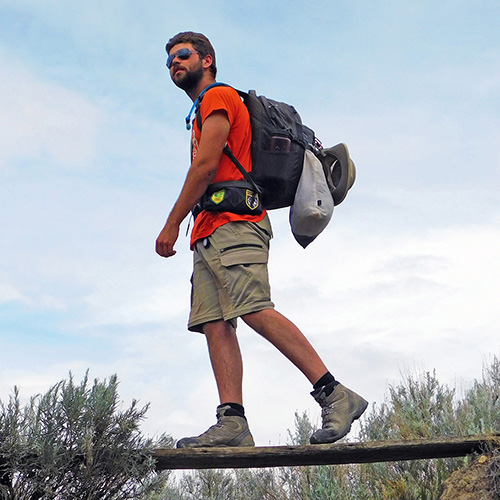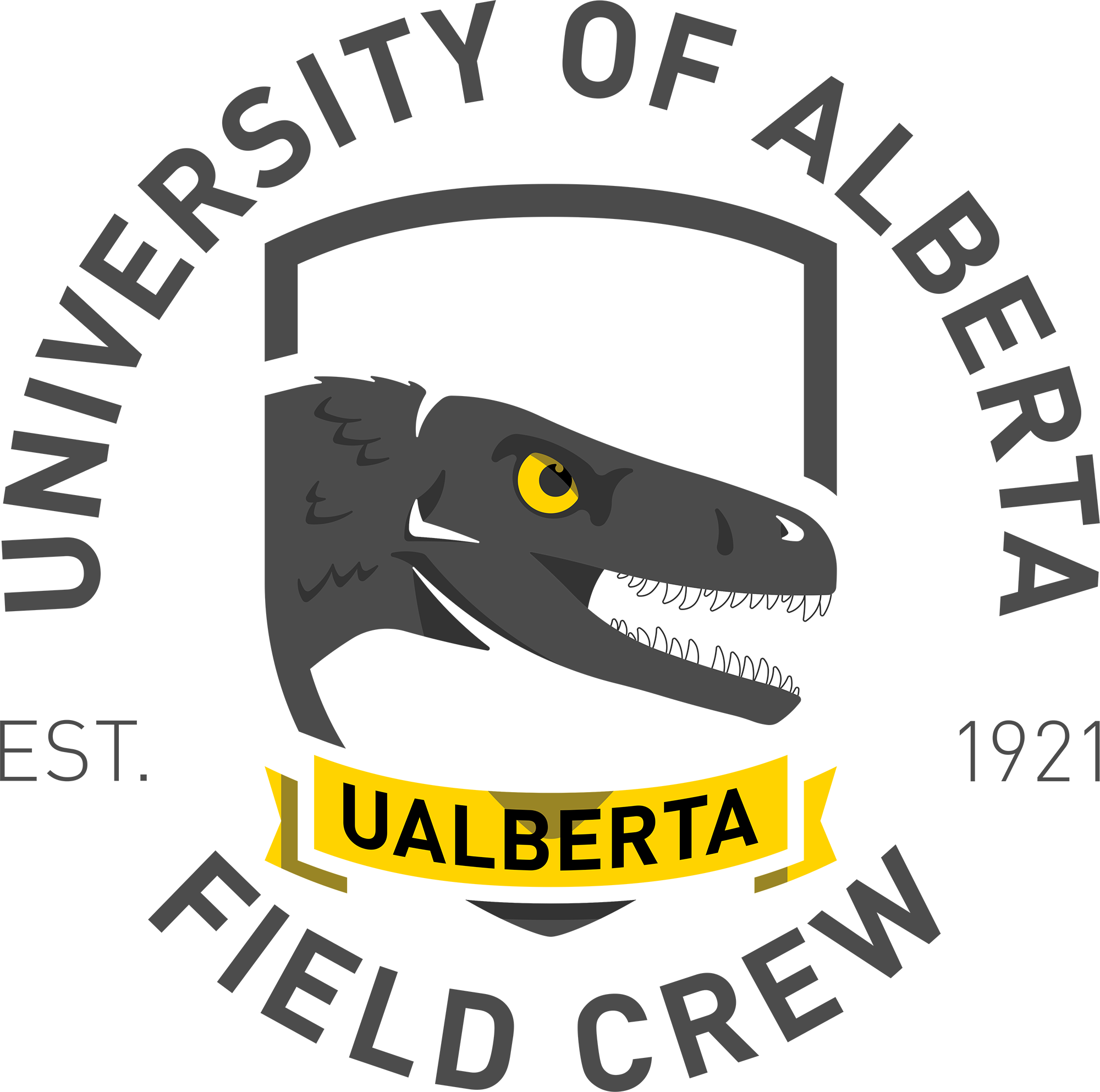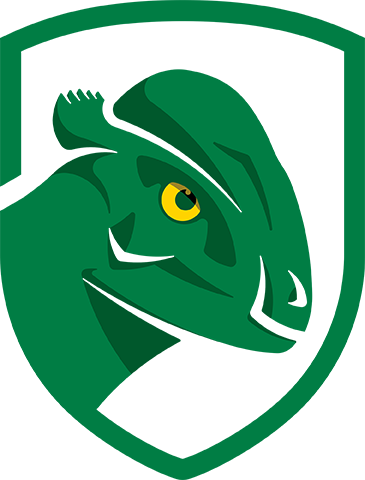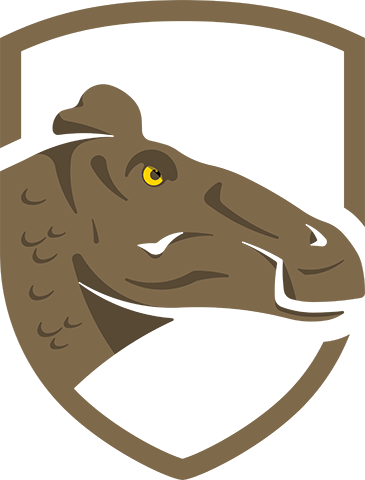’19 MSc, RA

Matt completed a master’s degree studying pelvic musculature in theropod dinosaurs. It focused on maniraptoran theropods, including groups closely related to birds such as therizinosaurs, caenagnathids, dromaeosaurids, and troodontids. Maniraptorans exhibit a wide range of morphological diversity, some of which is captured in the pelvis and its attachment sites for muscles and other soft tissues. Studying these attachment sites can provide useful data that offer insight into adaptations related to locomotion, lifestyle, and other aspects of palaeobiology. Fieldwork is another aspect of palaeontology that he cherishes for the opportunity to make discoveries while embracing the outdoors prospecting or excavating.
Matt grew up in Nanton, Alberta, and completed a BSc in Paleontology in 2016 and MSc with Specialization in Systematics and Evolution in 2019 at the University of Alberta. He continued working with the Currie Lab as a Research Assistant until 2022, during which time he redesigned the Dino Lab logo and created new ones for fieldwork and the senior undergraduate field school. Undergrad research included projects on brachiopod sclerobiont distribution, penguin evolution, and taphonomy on hadrosaur fossils.
LAB-RELATED PUBLICATIONS
Rhodes, M.M., Henderson, D.M., and Currie, P.J. 2021. Maniraptoran pelvic musculature highlights evolutionary patterns in theropod locomotion on the line to birds. PeerJ 9: e10855. DOI: 10.7717/peerj.10855
Rhodes, M.M. and Currie, P.J. 2020. The homology, form, and function of the microraptorine lateral pubic tubercle. Journal of Vertebrate Paleontology 40(1): e1755866. DOI: 10.1080/02724634.2019.1755866
Rhodes, M.M., Funston, G.F., and Currie, P.J. 2020. New material reveals the pelvic morphology of Caenagnathidae (Theropoda, Oviraptorosauria). Cretaceous Research 114: 104521. DOI: 10.1016/j.cretres.2020.104521
Rhodes, M.M. 2019. Reevaluating Maniraptoran Pelvic Musculature: Cursoriality, Convergence, and Caudal Decoupling [master’s thesis]. University of Alberta Education & Research Archive. DOI: 10.7939/r3-c1fh-nq03
OTHER LINKS







